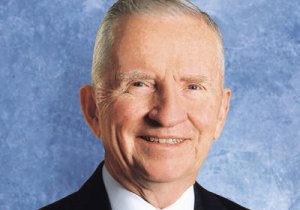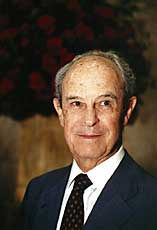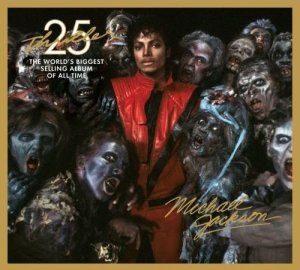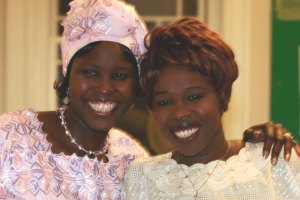Welcome to WordPress.com. This is your first post. Edit or delete it and start blogging!
Hello world!
October 31, 2009Michael and Prince, June 25, 2009 – Michael e Prince, 25 de junho de 2009
June 26, 2009Black Beauty 12/Beleza Negra 12
June 25, 2009
What is the necessity of white power groups? – O que é a necessidade de grupos de poder branco?
June 22, 2009What is the necessity of white power groups?
American and Brazilian billionaires
Bilionários americanos e brasileiros


Jorge Paulo Lemann, Henry Ross Perot


George Soros, Aloysio de Andrade Faria
It appears that some white people actually believe that modest gains achieved by minority groups are a threat to white supremacy. There were the American Civil Rights and Black Power Movements of the 1960s and 1970s that many seem to believe improved the lives of all African-Americans. But realistically, while these movements improved the lives of many individual black people, 40 years later, the overall situation of African-Americans as a group has not changed. Black children still attend inferior schools, black wealth is about one-tenth the wealth of whites, and reports still prove that discrimination, racism and underrepresentation affect the lives of African-Americans. OK, a black man is the president of the most powerful country in the world, but he too is an individual; an individual who must protect the interest of a capitalist system that is maintained and operated by white people. African-Americans are not the owners of any major enterprise that would cause the world to collapse. Afro-Brazilians are in a similar position as a whole and there are far fewer individual Afro-Brazilians that have some type power or influence in Brazil.
The Civil Rights, Black Power (America) and Unified Black (Brasil) Movements were and are social movements that arose as a response to racist systems to secure the rights of full citizenship for populations that were and are systematically denied these rights. Since the colonization of the Americas, what rights and representation have been systematically denied from whites as a group and were based on the question of race? If anything, racial privilege has guaranteed white rights.
Let me make one point. Screams of black power and white power are not the same thing. Black power is a declaration that black people want to have some control over their own destiny and a future for their children in societies where they have been denied access. Although there have been a few black groups that could be described as racist, two of Black Power’s most vocal advocates, the Black Panthers and Malcolm X at the end of his life, preached solidarity with other groups to achieve an end to inequality and racial oppression. White Power groups, on the other hand, usually preach white superiority, racial purity and the elimination of other racial groups. And there is one fact that ultimately makes screams of White Power sound ridiculous: White people already have the power. And this is not meant to initiate any racial antagonism; it’s a simple fact.
Sempre tenho questionei a necessidade e ideologias de grupos de poder branca. As pessoas que se juntem a estes tipos de grupos parecem pensar que porque existem organizações não-brancos que representam os interesses de gente não-branca, deveria ser também grupos que defendem os interesses das pessoas brancas. Eu não entendo essa lógica. Já existem grupos que advogam para gente branca: governo, negócios, empresas imobiliárias, instituições financeiras, a mídia, etc. A lista continua. A estrutura de poder do mundo inteiro é criado por pessoas brancas para pessoas brancas. Nas áreas de negócios, administração, ciências, finanças e muitas outras áreas, as pessoas de ascendência e/ou aparência europeia continuam a dominar estas esferas de poder. Na américa do norte e nos muitos países latino-americanos, o estrutura de poder é representada por pessoas que aparecem como se os seus antepassados são da Europa Ocidental. Brancura continua a ser o padrão de beleza, poder, status de classe média e até mesmo a humanidade. Então, o movimento poder branca é realmente sobre o que?
Os movimentos Direitos Civis, Poder Negra (América) e Negro Unificado (Brasil) foram e são movimentos sociais que surgiram como uma resposta aos sistemas racistas para garantir os direitos integrais de cidadania para as populações que foram e são sistematicamente negados estes direitos. A partir da colonização das Américas, quais direitos e representação terem sido sistematicamente negada aos brancos como um grupo e foram baseadas na questão racial? Se qualquer coisa, privilégio racial tem garantido os direitos brancos. As políticas de ações afirmativas e a ascensão de Barack Obama estão sendo responsabilizados pelo aumento da insegurança, indignação e atos de violência por supremacistas brancas nos Estados Unidos. Há também um medo do inevitável condição de maioria dos não-brancos nos Estados Unidos dentro dos próximos 40 anos. No Brasil, as políticas de ação afirmativa iniciadas no início do século 21 tem instigados debates acalorados sobre raça em um país que sempre negou a existência de racismo e onde um diálogo e debate sobre a questão da raça só recentemente começou. Políticas de ação afirmativa nos Estados Unidos ter existido por quatro décadas e foram apenas recentemente que os protestos contra estas políticas resultaram ao fim desses programas em algumas instituições de ensino superior. No Brasil, a ação afirmativa tenha durado menos de uma década e já havia sido ações para inverter estas políticas.
Deixe-me faça um ponto. Gritos de poder negro e poder branco não são a mesma coisa. Poder Negro é uma declaração que a população negra deseja ter algum controle sobre seu próprio destino e um futuro para seus filhos em sociedades onde eles têm sido negado o acesso. Embora havido alguns grupos negros que podem ser descritas como sendo racista, dois dos mais sincero defensores do poder negro, os Black Panthers e Malcolm X no final de sua vida, pregou a solidariedade com outros grupos para atingir um fim a desigualdade ea opressão racial. Grupos de poder branco, por outro lado, geralmente pregam superioridade branca, pureza racial e a eliminação de outros grupos raciais. E há um fato que finalmente torna gritos de poder branco soar ridículo: a gente branca já têm o poder. E não é a intenção a iniciar qualquer antagonismo racial; é um fato simples.
The hidden danger of blatantly racist acts – O perigo oculto de atos racistas e flagrantes
June 17, 2009The hidden danger of blatantly racist acts



Anthony Garotinho, Benedita da Silva
O perigo oculto de atos racistas e flagrantes
Na semana passada, houve uma série de acontecimentos que continuam a revelar o problema racial que existe nos Estados Unidos. A eleição de Barack Obama levou muitos a crer que estamos agora a viver em um “pós-racial” da sociedade. Pessoas que acreditam isso seja verdade parece ter ignorado todos das demonstrações flagrantes de animosidade, ódio e insensibilidade racial. Na semana passada, um homem com ligações a grupos neo-nazis matou um homem afro-americano em um museu dedicado ao Holocausto Judeu. Desde então, temos visto ativista do Partido Republicano Rusty DePass referir a uma gorila como uma antepassado da Primeira Dama Michelle Obama. Vimos também um e-mail racista enviado por Sherri Goforth, assisstente legislativo do senadora republicana Diane Black. A fotografia no e-mail apresentada fotos de todos dos 44 presidentes americanos. A fotografia no 44o lugar, que representou Obama foi simplesmente uma imagem de dois olhos com um fundo preto.
The danger of having brown skin – O perigo de ter pele marrom
June 15, 2009
 Fight against the genocide of black people. React to racial violence. Don’t kill our children…
Fight against the genocide of black people. React to racial violence. Don’t kill our children…- In 2003, police in Rio de Janeiro killed 4 times more people than police in the entire United States.
- In 2003, police in Rio killed 1,195 people. By comparison, police in the entire United States killed 1,080 people within a three year period (2002-2004)
- In 2003, police in São Paulo killed 868 people. In 1992, São Paulo police killed 61 times more people than New York City police killed in that same year (15 times more per capita)
- In 2003, police in three Brazilian states (São Paulo, Rio de Janeiro and Minas Gerais) killed nearly 5 times more people than American police killed in the entire United States (1749 and 370 respectively)
- Between 1990 and 2001, São Paulo police killed 7,942 people. Between those same years, police in the entire United States killed 4,558 people. To put these numbers in perspective, the combined total police murders in Rio de Janeiro and São Paulo in one year (2003) was 2,063. That is two-thirds the total number of US casualties (2,947) in nearly a three year period (March 2003 to December 2006) in the war in Iraq.
- In 2004, in the northeastern Brazilian state of Bahia, 699 of the 706 deaths of people between the ages of 15 and 29 were Afro-Brazilian. In comparison, in another period of high murder rates, in a three year period (1987-1990) in the city of Chicago, 708 African-American men between the ages of 14 and 29 were killed.
- In 2007, 426 African-American youth between the ages of 14 and 17 were killed in the entire United States. Between the years 2008 and 2009, more than 3,000 people were killed in the northeastern city of Recife. The population of Recife (in the state of Pernambuco) is 1.5 million. In comparison, the combined number of homicides in the states of New York and California in 2005 was approximately 3,400. The combined population of California and New York in 2005 was approximately 55 million.
- In the Brazilian capital city of Brasilia in 2004, a black youth was 5 times more likely to be killed than a white youth. This is equal to a 2007 report about blacks in the city of Philadelphia, Pennsylvania.
 Funeral of/de Sean Bell
Funeral of/de Sean Bell
The differences between the murders of African-Americans and Afro-Brazilians is that the vast majority of the murders of black men in Brazil appear to be committed by police and death squads, many of which are former or off duty police. In the United States, approximately 94% of murders of black men are committed by other black men. Because of these numbers, one writer described black killers of other black men the “Black KKK.” It should also be acknowledged that a large percentage of police in Brazil are Afro-Brazilian. The bottom line here is that whether the murders are committed by police, death squads or black men, having brown skin in either country can be dangerous.
 Burial of/Enterro de Wellington Gonzaga da Costa, Marcos Correia & David Wilson Florêncio
Burial of/Enterro de Wellington Gonzaga da Costa, Marcos Correia & David Wilson Florêncio
O perigo de ter pele marrom
É interessante notar como gente percebe as relações raciais nos Estados Unidos e no Brasil. Em geral, a América tem uma imagem de um país de ódio racial e animosidade. Por outro lado, gente percebe Brasil ser um lugar livre de racismo, discriminação e ódio. Mas, quando história e as estatísticas são consideradas, é difícil compreender a razão este percepção existe. Embora é verdade que a América tem uma história de animosidade e ódio racial, as relações no Brasil não são tão como cordial como gente acredita. Quando gente pense em países que pregam supremacia branca, normalmente costumam imaginar lugares como a época de Alemanha nazista, a época de Jim Crow na América e o época de Apartheid em África do Sul. Mas, se a desigualdade social, representação impreciso na mídia e maus tratos de um grupo por outro são considerados fatores essenciais da supremacia branca, o Brasil também pertence nesta categoria.
Por causa da história do mundo, documentários e notícias, muitas pessoas estão familiarizados com atrocidades cometidas pelos nazistas e o Ku Klux Klan, mas parece que poucas pessoas sabem a história das esquadrões da morte e o polícia militar no Brasil. Pode ser surpreendente para saber, mas é muito mais perigoso para ser um cidadão do Brasil do que ser um cidadão dos Estados Unidos. Algumas estatísticas vai provar o meu ponto.
-
Em 2003, a polícia do Rio de Janeiro matou 4 vezes mais do que a policia em todos os Estados Unidos.
Em 2003, a polícia no Rio matou 1.195 pessoas. Em comparação a polícia dos Estados Unidos matou 1.080 pessoas no período de 3 anos (2002-2004).
Em 2003 a polícia de São Paulo matou 868 pessoas.
Em 1992, São Paulo matou 61 vezes mais que a polícia de Nova York naquele mesmo ano (15 vezes mais per capita).
Em 2003, a polícia de três estados brasileiros (São Paulo, Rio de Janeiro e Minas Gerais) matou quase 5 vezes mais do que toda a polícia americana (1749 e 370 respectivamente).
Entre 1990 e 2001, a policia de São Paulo matou 7942 pessoas. Neste mesmo espaço de tempo a polícia de todos os Estados Unidos matou 4.558 pessoas. Colocando se estes números em perspectiva, o total de crimes da policia do Rio e de São Paulo em 2003 foi 2063. Isto representa 2/3 do total de casualidades americanas (2947) num período de quase três anos (Março de 2003 a Dezembro de 2006) na guerra do Iraque.
Em 2004, no estado da Bahia na nordeste brasileiro, 699 das 706 mortes de pessoas entre as idades de 15 e 29 eram afro-brasileiras. Em comparação, em outro período de altas taxas de homicídio, em um período de três anos (1987-1990) na cidade de Chicago, 708 homens afro-americanos entre as idades de 14 e 29 foram mortos.
Em 2007, 426 juventude afro-americana entre as idades de 14 e 17 foram mortos em todo o Estados Unidos.
Entre os anos 2008 e 2009, mais de 3.000 pessoas foram mortas em Recife do nordeste brasileiro. A população do Recife (no estado de Pernambuco) é de 1,5 milhões. Em comparação, o número combinado de homicídios nos estados americanos de Nova Iorque e Califórnia, em 2005 foi de aproximadamente 3.400. A população combinada da Califórnia e Nova York em 2005 foi de aproximadamente 55 milhões.
Na Distrito Federal de Brasília, em 2004, um juventude negra foi 5 vezes mais provável ser morto do que uma juventude branca. Esta é igual um relatório de 2007 sobre os negros americanos na cidade de Filadélfia, Pensilvânia.
O ponto final aqui é que, independentemente de os assassinatos sejam cometidos por policiais, esquadrões morte ou negros, ter pele marrom em qualquer país pode ser perigoso.
With or without the mask, it’s still white supremacy (Part 1) – Com ou sem a máscara, é ainda supremacia branca (Parte 1)
June 11, 2009With or without the mask, it’s still white supremacy (Part 1)

,+o+l%C3%ADder+da+A%C3%A7%C3%A3o+Integralista+Brasileira.jpg)
,+Head+of+the+American+Nazi+Party.jpg)


Ontem, vimos uma outra triste lembrete que não vivemos em uma sociedade “pós-racial”. Supremacista branca James Von Brunn, de 88 anos, entrou no Museu do Holocausto em Washington DC e matou um segurança afro-americano antes de ser baleado. Claro que este é um acontecimento trágico, mas existe algo ainda mais perigoso sobre este caso que a imprensa não está falando. Porque este ato de violência é uma óbvia exibição de supremacia branca, a sociedade ignora o menos agressivas formas de racismo. Supremacia branca é simplesmente a crença de que pessoas brancas são melhores do que outras “raças” de pessoas. Mas simplesmente porque as pessoas que acreditam na supremacia branca não realmente matar pessoas não-brancas, isso não significa que não existe supremacia branca. Existem vários níveis de racismo e de supremacia branca. Quando gente acredita os estereótipos sobre pessoas fora do seu grupo social, este é o preconceito que pode levar à crença de superioridade.
É por causa do americano abertamente violenta ou supremacista branca alemão que verbalmente manifesta seu ódio de não-brancos que faz muitos brasileiros acreditam que o racismo não existe no seu país. Mas a verdade é que há milhões de pessoas no Brasil e outros países que aceitam a ideia de pessoas brancas sendo o mais atraente e intelectualmente superior gente no planeta e a crença nessas idéias são a base da supremacia branca. Eu sempre leio em fóruns on-line a opinião de muitos brasileiros que sempre escrevem algo como, “o Brasil nunca teve o ku klux klan ou grupos de supremacia branca que mataram negros, por causa isso, é América que é o país racista.” Não há nenhuma negação de que ao seu auge na década de 1920, a KKK teve uma adesão de mais de 4 milhões pessoas nos Estados Unidos. É verdade também que o objetivo do KKK foi de representar os interesses dos americanos brancos contra negros, judeus e outros não-brancos por meio da violência, intimidação e linchamento. Como um grupo clandestino e vigilante, o Klan é conhecido por usar capuz branco e roupão. De acordo com muitas fontes, existe e existiu e muitas organizações brasileiras que têm ideologias semelhantes.
Na década de 1930, o ação integralista brasileiro (AIB) teve uma adesão estimada ser entre 600 mil e 1 milhão. E, embora houvesse diferenças importantes entre nazistas alemães e fascistas italianos, houve também semelhanças. Havia diferentes facções e crenças dentro da AIB. Sob a liderança do jornalista Plínio Salgado, o integralistas aceitou membros negros. Mas houve também o lado radical do Integralistas liderada por Gustavo Barroso que foi o líder da facção mais extrema do integralistas. Barroso chefiou a milícia das Integralistas e era extremamente anti-semitas, como eram muitos membros da integralistas, que muitas vezes levou a ataques violentos contra os negros. Barroso, como Vonn Brun e outros, acreditou que banqueiros judeus fazem parte de uma conspiração judaica internacional. Integralistas, como o KKK e o partido nazista americano, defendeu cristianismo eo autoritarismo, opôs comunismo, mas eles não aceitaram Capitalismo.
Devido à natureza difundida da miscigenação na sociedade brasileira, os integralistas evitada a adaptação do discurso abertamente racista, mantendo o seu objetivo futuro da supremacia branca por meio da eliminação de não-brancos brasileiros. As integralistas simultaneamente pregou anti-semitismo e fusão racial e mantido relações estreitas com a filial brasileira do partido nazista. Embora o partido nazista forneceu apoio financeiro para as integralistas, a ideologia integralista da fusão racial foi um ponto-chave das diferenças irreconciliáveis com os nazis. Hoje, no Brasil, como em América, existe diferentes facções de grupos skinheads, neo-nazis e supremacista branca, com os esquadrões da morte e polícia militar brasileira aparentemente dedicado à eliminação do população negra e pobre.
Air France 447: The tragedy, the fortunate – Air France 447: a tragédia, o afortunado
June 9, 2009Air France 447: The tragedy, the fortunate
It’s always sad to hear about a plane crash. Of course, in comparison to the number of flights that happen everyday, plane crashes are rare. But even one crash is too many and lately, there seems to have been simply too many plane accidents! Each person who dies in a plane crash has their own life story. For the majority of people, we only learn about their lives when there is a tragedy. And after each tragedy, we learn about people that were not involved in the tragedy because of some twist of fate. Here are three of those people.

Juliana de Aquino was 29 years old. She was a Brazilian singer who, like many Brazilians of the Brazilian diaspora, lived in Europe. Juliana was born in the Brazilian capital city of Brasilia, but after finding success as a singer, she moved to Stuttgart, Germany, in 2003. Juliana studied music at the University of Brasilia and released her first CD in 2001. In 2003, she played the role of Mary Magdalene in the musical,”Jesus Christ Superstar”, in Austria. Her last performances were as part of the cast of the musical “Wicked”, in Stuttgart.
Tuane Rocha at a special mass for the victims of Air France flight 447 in Rio
Tuane Rocha em uma massa especial para as vítimas do vôo 447 da Air France em Rio
Student Tuane Rocha, 26, was the fiancee of Russian businessman Andrei Kiselev, 47, another victim of flight 447. They had been together for a year and a half and were going to get married on June 18, her birthday. Initially, Kiselev was going to return to Moscow on May 24th but stayed until May 31st to spend more time with Rocha: “It’s unbelievable to think that an Air France flight simply disappeared”, she said. “It’s strange the lack of a complete report. I only want to bury my fiancee.”
 Renata Cristina da Cruz
Renata Cristina da Cruz Air France 447: a tragédia, o afortunado
Renata Cristina da Cruz também é brasileira, um manicure que mora em Portugal. Ela já tinha comprado um bilhete de avião pelo vôo 447 Air France, mas o seu pai pediu que ficasse mais um pouco. Quando ela ouviu que avião tinha desaparecido, ela começou a chorar: “Foi difícil acreditar no que tinha acontecido.”
Sempre é. E nunca fica mais fácil.
(Yet another) Black body falling on the ground – (Ainda mais um) Corpo negro caído no chão
June 5, 2009(Yet another) Black body falling on the ground*




Bem, aconteceu de novo. Mais um homem negro foi morto por causa de percepção e julgamento antecipado. Polícial da cidade de Nova Iorque, Omar J. Edwards foi morto depois ele perseguiu um outro homem que ele viu arrombar em seu carro. Após uma breve luta, a ladrão fugiu de Edwards e começou a correr. Edwards puxou sua arma e seguiu o homem. Outro policial, andando em um carro com outras polícias, viu Edwards e disparou seis tiros matando Edwards. Edwards não estava vestido no seu uniforme policial quando ele foi morto. O policial que matou Edwards foi branco. A morte de Edwards é mais outra em uma série de assassinatos de afro-americanos, incluindo os de Sean Bell em Nova York e Oscar Grant em Oakland, Califórnia.





























